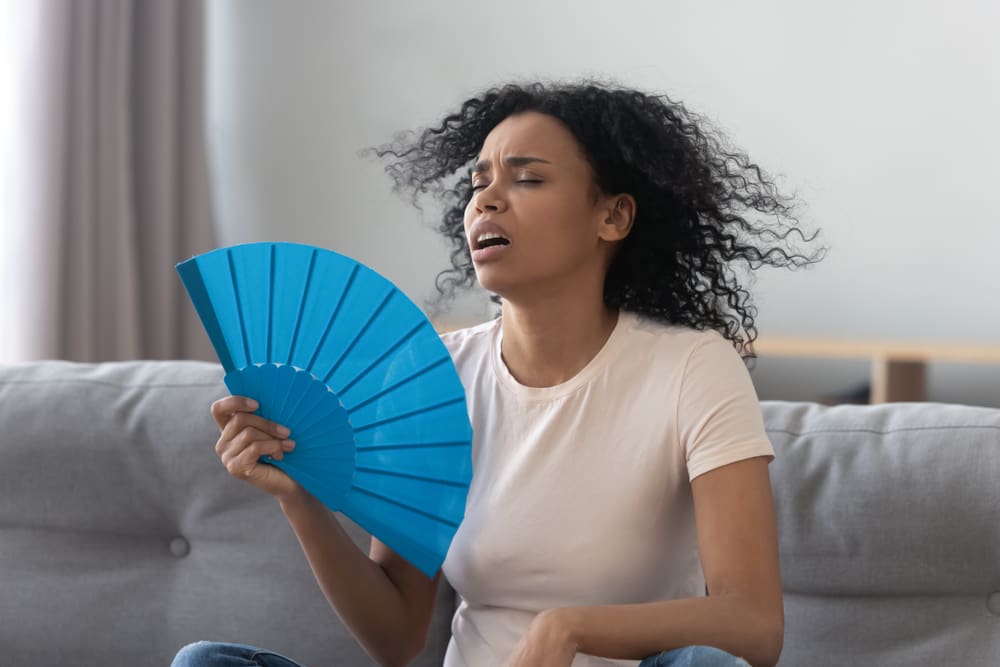That spring jacket you’ve been wearing might need to stay in the closet this week as Southern California braces for another round of unseasonable heat. After a brief taste of spring-like weather, temperatures are climbing back into dangerous territory, with several areas expected to flirt with or break records in the coming days. While coastal areas will feel the warmth, certain inland spots will bear the brunt of this heat event, creating potential health risks for residents unaccustomed to summer-like conditions this time of year.
The weather whiplash continues a pattern of extreme temperature fluctuations that have become increasingly common across the region, with some locations potentially jumping 20 degrees above seasonal norms before a possible rainy cooldown arrives for the weekend.
The hotspots heading for triple-digit trouble
As this heat event unfolds, five areas stand out as particularly vulnerable to extreme temperatures that could challenge both daily and all-time records for this time of year.
- Woodland Hills tops the watch list, having already broken its March 24 record with a scorching 95 degrees, eclipsing the previous record of 89 degrees set in 1988. Forecasts suggest this San Fernando Valley hotspot could approach 100 degrees as the week progresses, creating serious heat risks in an area that regularly experiences some of the highest temperatures in Los Angeles County. Weekend projections show potentially reaching 99 degrees, making outdoor activities particularly dangerous during peak afternoon hours.
- Burbank follows closely behind with temperatures expected to reach the mid-90s, potentially challenging records once again. The area has historically been vulnerable to extreme heat events, with previous heat waves pushing temperatures to 114 degrees. This urban heat pocket, surrounded by hills that trap warm air, frequently experiences temperatures significantly higher than coastal areas just a few miles away.
- The Antelope Valley, including Palmdale, appears primed for more record heat after already tying its March 24 record of 84 degrees established in 1956. Weather experts warn this desert region could see temperatures 15 to 18 degrees above normal in the coming days. The combination of dry air, minimal cloud cover, and limited vegetation creates perfect conditions for rapid heating and potential record-breaking temperatures.
- Riverside and the broader Inland Empire will face particularly intense conditions as the heat builds. Previous heat events have pushed Riverside temperatures to 115 degrees, and while this event may not reach those extremes, forecasts suggesting temperatures approaching 98 degrees still represent dangerous conditions for residents. The urban heat island effect combines with the area’s inland location to amplify temperatures well beyond coastal readings.
- Paso Robles rounds out the top five hotspots after already breaking its March 24 record with 86 degrees, surpassing the previous record of 85 set in 1951. This Central Coast location often experiences dramatic temperature swings due to its inland valley location, and current forecasts suggest continued above-average temperatures before the weekend cooldown arrives.
The health risks hiding in plain sight
This unseasonable heat brings serious health concerns that residents might not anticipate during what should be mild spring conditions. The rapid temperature increase catches many people unprepared, both physically and mentally, for summer-like weather.
Heat-related illnesses represent the most immediate danger, particularly for vulnerable populations. The elderly, young children, outdoor workers, and those with chronic medical conditions face elevated risks during these temperature spikes. Early symptoms of heat exhaustion include heavy sweating, weakness, cold and clammy skin, and nausea, which can progress to the life-threatening condition of heat stroke if left untreated.
Dehydration occurs more rapidly than many people realize during heat events, especially when humidity levels remain low. The dry heat characteristic of Southern California creates deceptive conditions where sweat evaporates quickly, masking how much fluid the body is losing. Health experts recommend drinking water consistently throughout the day rather than waiting until thirst develops, which often signals dehydration has already begun.
Air quality typically deteriorates during heat events as elevated temperatures accelerate chemical reactions that create ground-level ozone, a primary component of smog. People with respiratory conditions like asthma or COPD may experience worsening symptoms even during brief outdoor exposure. The combination of heat and poor air quality creates compounding health risks that affect millions across the region.
Power infrastructure faces increased strain as air conditioning usage surges, potentially leading to outages that further compromise health and safety. Previous heat waves have triggered rolling blackouts across parts of Southern California, leaving vulnerable residents without cooling during the hottest hours of the day. Emergency planners recommend identifying cooling centers in advance should home cooling become unavailable.
The weather whiplash ahead
The dramatic temperature fluctuations expected across Southern California in the coming days represent a classic case of weather whiplash, with potential impacts on everything from infrastructure to personal health.
Tuesday continues the warming trend with temperatures 10 to 15 degrees above normal in valley locations and 15 to 18 degrees above normal in interior areas. While slightly cooler than Monday’s record-breaking heat, these temperatures still represent potentially dangerous conditions, particularly during afternoon hours when heat typically peaks.
Midweek brings the beginning of a gradual cooling trend as morning clouds and fog return to coastal areas. This marine influence will slowly push inland, providing modest relief from the extreme heat. Coastal areas will see temperatures dropping into the 70s while inland valleys remain warm but begin trending downward from their peaks.
The weekend forecast introduces an unexpected twist with a potential storm system developing in the Pacific. This weather system is expected to move down the coast Sunday night into Monday, bringing a 15 to 20 percent chance of showers to the region. The contrast between near-100 degree temperatures and potential rain within the same week highlights the increasingly erratic weather patterns affecting Southern California.
Next week promises a significant cooldown with temperatures possibly returning to the 60s and 70s across much of the region. This rapid temperature drop may provide relief from the heat but creates its own challenges for infrastructure and personal health as systems adjust to yet another abrupt change.
The alternating pattern between extreme heat and normal or below-normal temperatures increasingly characterizes Southern California’s climate reality. These swings stress infrastructure designed for more consistent conditions and create planning challenges for everything from water management to energy grid operations.
How to protect yourself during extreme temperature events
As Southern California faces another round of potentially record-breaking heat, practical precautions can significantly reduce health risks and discomfort.
Timing outdoor activities strategically provides one of the simplest yet most effective protections. Early morning hours before 10 a.m. or evening hours after the sun begins setting offer significantly lower temperatures and reduced UV exposure. Even brief physical exertion during peak afternoon heat can quickly lead to heat-related illness.
Proper hydration requires more attention than many realize during heat events. Health experts recommend drinking water consistently throughout the day rather than large amounts infrequently. Adding electrolytes becomes important during extended outdoor exposure or physical activity as sweat depletes essential minerals along with fluids.
Appropriate clothing makes a substantial difference in heat tolerance. Loose-fitting, light-colored, lightweight fabrics that allow air circulation while protecting skin from direct sun exposure provide the best combination of comfort and protection. Wide-brimmed hats and quality sunglasses add critical protection for the head and eyes.
Creating cooling opportunities throughout the day helps prevent heat stress from accumulating. Simple techniques like applying a cool, damp cloth to the neck and wrists, where blood vessels run close to the skin, can temporarily lower body temperature. Taking brief cool showers provides another effective cooling strategy when heat builds.
Monitoring vulnerable community members becomes particularly important during heat events. Checking on elderly neighbors, those with chronic health conditions, and people without adequate cooling provides a critical safety net. Many heat-related fatalities occur among those living alone who lack social connections to identify when they’re in distress.
The bigger climate picture behind the swings
While individual heat events have always occurred, the increasing frequency and intensity of temperature extremes reflect broader climate patterns affecting Southern California and beyond.
The urban heat island effect amplifies naturally occurring heat in developed areas where concrete, asphalt, and buildings absorb and radiate solar energy. This phenomenon explains why urban cores like downtown Los Angeles often record temperatures several degrees higher than nearby natural areas. The effect becomes particularly pronounced during heat events, creating pockets of dangerous conditions in densely developed neighborhoods.
Climate research indicates Southern California faces a future with more frequent, intense, and longer-lasting heat events as global temperatures rise. These changes affect not just summer conditions but create more unseasonable heat during traditional shoulder seasons like spring and fall, extending the period of potential heat risk.
The increasing temperature variability, rather than just higher averages, creates particular challenges for infrastructure, agriculture, and public health systems designed around historical patterns. The rapid swings between extreme heat and normal or below-normal conditions stress everything from power grids to water systems.
Adaptation strategies increasingly focus on building heat resilience through both personal and community measures. Expanded urban tree canopy, cool roof technologies, heat-reflective pavement, and increased access to cooling centers represent community-level approaches to reducing heat impacts. These strategies become particularly important in historically underserved neighborhoods that often face the most severe heat effects with the fewest resources to address them.
As Southern California navigates another round of potential record heat before a weekend cooldown, the event offers another reminder of the region’s changing climate reality. The increasing frequency of these temperature swings suggests that weather whiplash, rather than consistent conditions, may become the new normal for residents across the region.















